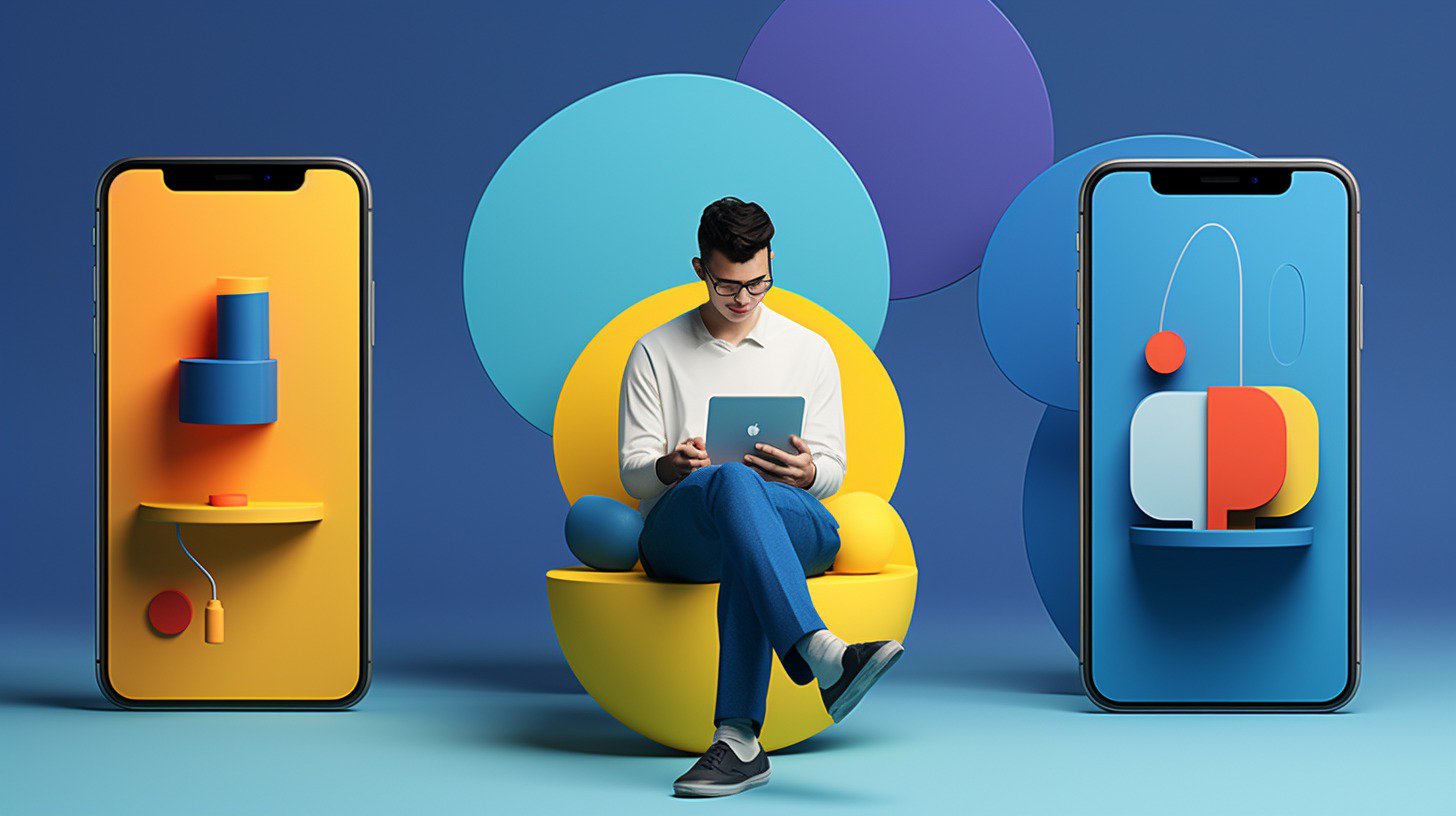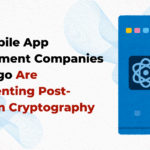
In the contemporary digital landscape, the connection between business goals and user experience is essential for a brand’s prosperity. Whether dealing with a website, mobile application, or enterprise solution, a UI/UX design company is instrumental in converting business objectives into intuitive, visually appealing, and functional designs. This process extends beyond mere aesthetics; it involves crafting user interfaces that resonate with a company’s strategic aims, enhance user satisfaction, and foster measurable results.
This article will examine how a UI/UX design company successfully transforms business objectives into impactful visual designs that embody brand identity, captivate users, and facilitate business expansion.
Understanding Business Goals and Objectives
Prior to initiating the design process, it is essential for a UI/UX design company to possess a comprehensive understanding of the client’s business objectives. These objectives may encompass enhancing customer engagement, boosting conversion rates, introducing a new product, or undertaking a rebranding initiative. Regardless of the specific aim, ensuring that the design aligns with the overall business strategy is of utmost importance.
Initial Discovery Phase
The alignment of design with business objectives commences with the discovery phase. In this initial stage, a UI/UX design company engages in close collaboration with the client to collect comprehensive information regarding their business, industry landscape, target demographic, and competitive environment. The primary areas of emphasis include:
- Establishing core business objectives: This may encompass goals such as enhancing e-commerce sales, boosting app downloads, or elevating user engagement.
- Identifying the target audience: Gaining insights into the end-users, including their preferences and challenges, is essential for developing a design that meets their needs while also fulfilling business objectives.
- Conducting competitor analysis: Analyzing competitors allows the UI/UX design company to pinpoint market trends, strengths, and weaknesses, ensuring that the design provides a distinctive offering.
A thorough comprehension of these fundamental aspects empowers the UI/UX design company to make well-informed design choices that resonate with the company’s overarching vision.
Aligning UI/UX Strategy with Business Goals
Upon comprehending the business objectives, a strategic plan is formulated to ensure that the efforts of the UI/UX design company are in harmony with these goals.
Creating a Design Strategy
A UI/UX design company utilizes the insights obtained during the discovery phase to formulate a design strategy. This strategy acts as a guiding framework for the project, ensuring that each design component—ranging from color palettes to typography—aligns with the broader goals of the business.
Defining Key Performance Indicators (KPIs)
Key Performance Indicators (KPIs) play a crucial role in evaluating the effectiveness of any design initiative. For instance:
When the objective is to enhance conversion rates, the design may prioritize optimizing the user experience by implementing intuitive navigation and prominent calls-to-action.
Conversely, if the aim is to elevate brand awareness, the design would concentrate on maintaining consistency in the brand’s visual identity.
These KPIs are instrumental in confirming that the design solutions achieve their intended outcomes.ed by the UI/UX design company are not just visually appealing, but also effective in achieving the desired business outcomes.
Translating Business Goals into Visual Elements
Translating business objectives into visual components is an essential element in the development of effective user interfaces that correspond with a company’s strategic aims. By prioritizing user experience and brand identity, a UI/UX design company converts intricate business requirements into intuitive, functional, and visually appealing designs that yield positive outcomes.
Building User-Centric Interfaces
The subsequent phase in the procedure involves transforming the strategy into a visual design that corresponds with the client’s business goals. A UI/UX design company emphasizes the development of interfaces that prioritize user experience while also being aligned with specific objectives. Important visual components consist of:
Wireframes and Prototypes
Wireframes and prototypes serve as crucial instruments for a UI/UX design company, enabling the visualization of user flow and interface organization prior to engaging in comprehensive design work. They establish a foundational structure that outlines essential components such as navigation, buttons, and user pathways. This stage guarantees the integration of all business objectives into the user experience.
For example, if a software development company seeks to enhance the user onboarding experience, the wireframe would emphasize critical features that facilitate a smooth and uncomplicated onboarding process.
Typography and Color Schemes
Typography and color serve as significant visual components that express a brand’s character and support its business objectives. A UI/UX design company meticulously selects typefaces and color palettes that correspond with the brand’s identity. For instance:
- Typography: A contemporary, streamlined font may be selected for a technology startup, whereas a traditional serif font could be suitable for a high-end brand.
- Color Palettes: Various colors elicit distinct emotional responses. For example, blue is frequently linked to trust and professionalism, making it a prevalent choice among financial and technological firms. Conversely, bold colors such as red and orange may be employed to evoke feelings of urgency and enthusiasm.
Crafting the User Journey
A fundamental responsibility of a UI/UX design company is to develop the user journey in a manner that is consistent with the objectives of the business. Each interaction point within the interface should direct users toward a particular action, such as completing a purchase, subscribing to a newsletter, or seeking additional information. An effortless and intuitive user journey minimizes obstacles and fosters user engagement.
User Flow Optimization
If the objective of the business is to enhance sales, a UI/UX design company would prioritize the development of an efficient checkout process. This entails decreasing the number of clicks necessary to finalize a purchase, ensuring that calls-to-action are easily noticeable, and reducing potential distractions. Each visual component, including the positioning of the “Add to Cart” button and the arrangement of payment options, must be crafted to encourage user engagement.
Enhancing Visual Design with User Feedback
Improving visual design through user feedback is an essential process that guarantees designs align with business objectives while addressing user needs and preferences. By integrating genuine user insights and performance metrics, a UI/UX design company can enhance designs to foster more intuitive and captivating user experiences.
Importance of Iterative Design
A UI/UX design company does not conclude its work upon the completion of the initial design. Rather, it engages in an iterative process, consistently enhancing and optimizing the design in response to user feedback and performance metrics. This approach guarantees that the visual design remains in harmony with the changing objectives of the business and the requirements of its users.
Conducting Usability Testing
Usability testing is performed to ensure that the design aligns with both business objectives and user expectations. A UI/UX design company evaluates multiple facets of the design, including the ease of navigation, responsiveness, and overall user satisfaction. The findings yield important insights, enabling designers to implement essential modifications that improve user experience while maintaining a focus on business goals.
A/B Testing for Data-Driven Decisions
A further method utilized by a UI/UX design company is A/B testing. This process entails developing two variations of a design component, such as a button or the layout of a landing page, and evaluating them with actual users to ascertain which version yields superior performance. Such data-informed decisions guarantee that the visual design is in harmony with the business objective of enhancing user engagement and increasing conversion rates.
How a UI/UX Design Company Collaborates with a Software Development Company
In numerous projects, particularly those related to digital products, a UI/UX design company frequently works in close partnership with a software development company. This collaboration guarantees that the visual designs are not only visually appealing but also technically viable and functional across multiple platforms.
Ensuring Design-Development Alignment
A smooth transition between the UI/UX design company and the software development firm is essential. Design components should be straightforward to implement and compatible with various devices and operating systems. Effective communication between the design and development teams is vital to ensure that the end product aligns with both business goals and user requirements.
Front-End Development and Design Consistency
A UI/UX design company collaborates closely with front-end developers throughout the development process to guarantee that the visual designs are faithfully implemented in the final product. This collaboration encompasses ensuring design consistency, preserving the integrity of visual components, and optimizing performance.
Measuring the Success of Visual Design
Evaluating the effectiveness of visual design is essential for confirming its alignment with business goals and user needs. By monitoring key performance indicators, a UI/UX design company can analyze the influence of design choices and implement data-informed enhancements to boost user engagement and attain targeted results.
Tracking Key Metrics
Once the design has been executed, a UI/UX design company evaluates its effectiveness by analyzing key performance indicators, including:
- User engagement rates
- Conversion rates
- Time spent on page Bounce rates
These indicators are essential for assessing whether the visual design successfully meets the business objectives. If required, modifications can be implemented to enhance performance and sustain positive outcomes.
Conclusion
Translating business objectives into visual design necessitates more than mere artistic skill; it requires a strategic methodology that harmonizes user requirements with the organization’s aims. A UI/UX design company is essential in this endeavor, as it comprehends the fundamental goals of the business, formulates a design strategy, and develops user-focused interfaces that resonate with the company’s vision. Whether operating autonomously or in partnership with a software development company, the objective is to produce a design that is not only aesthetically pleasing but also yields quantifiable outcomes.





0 Comments